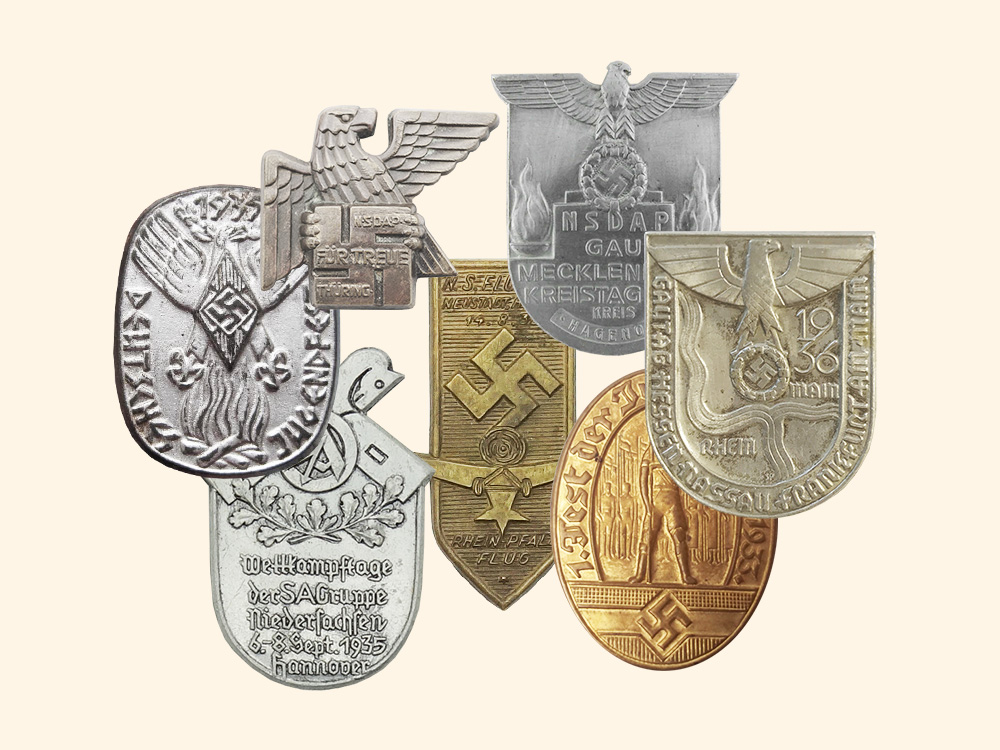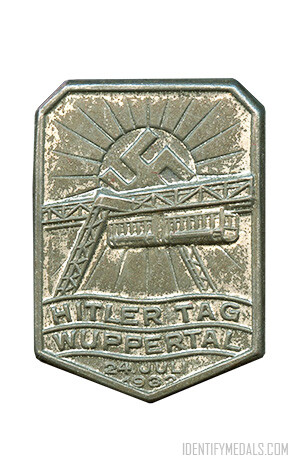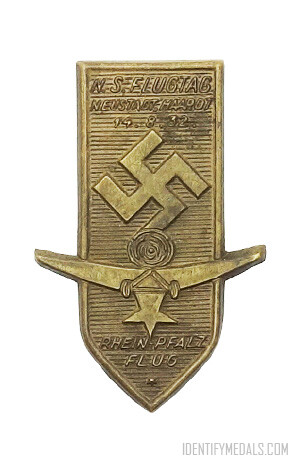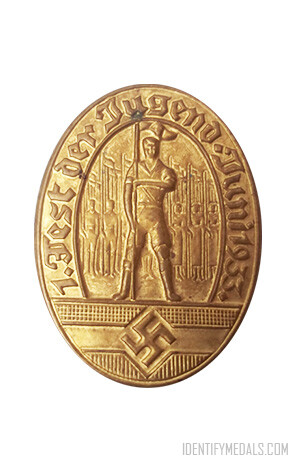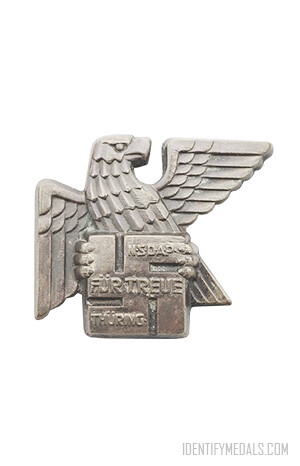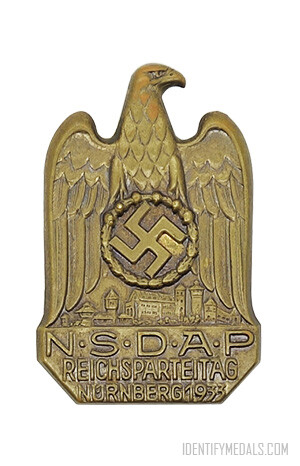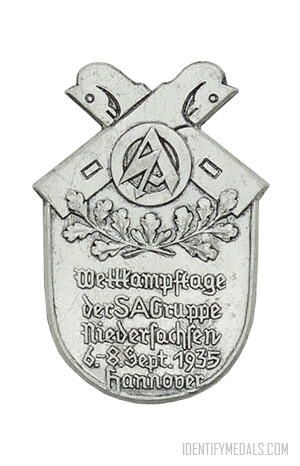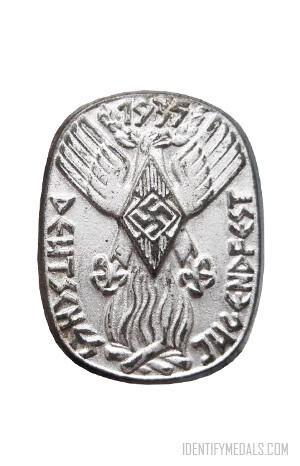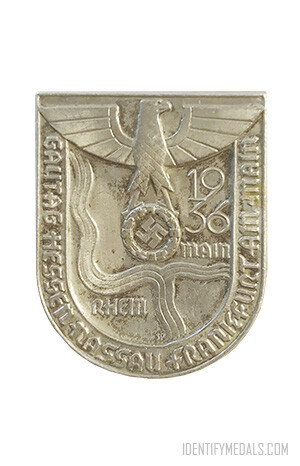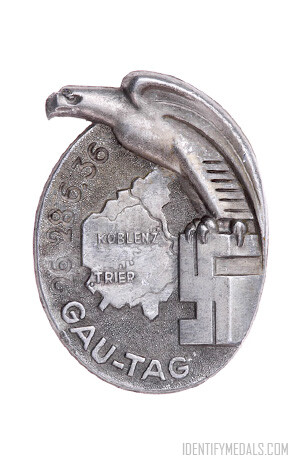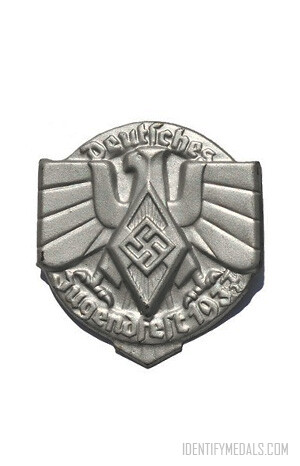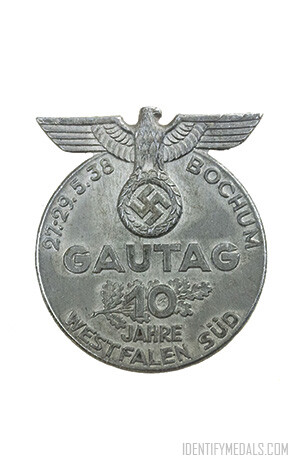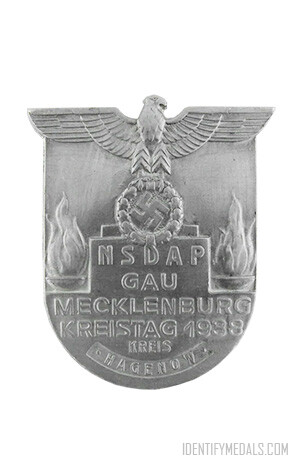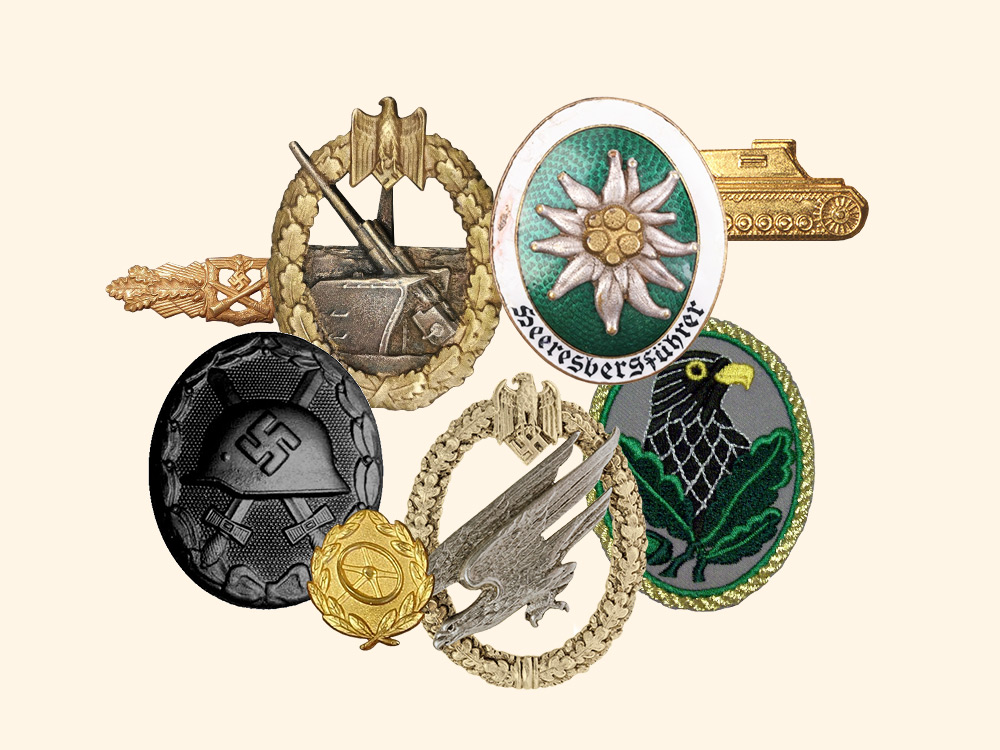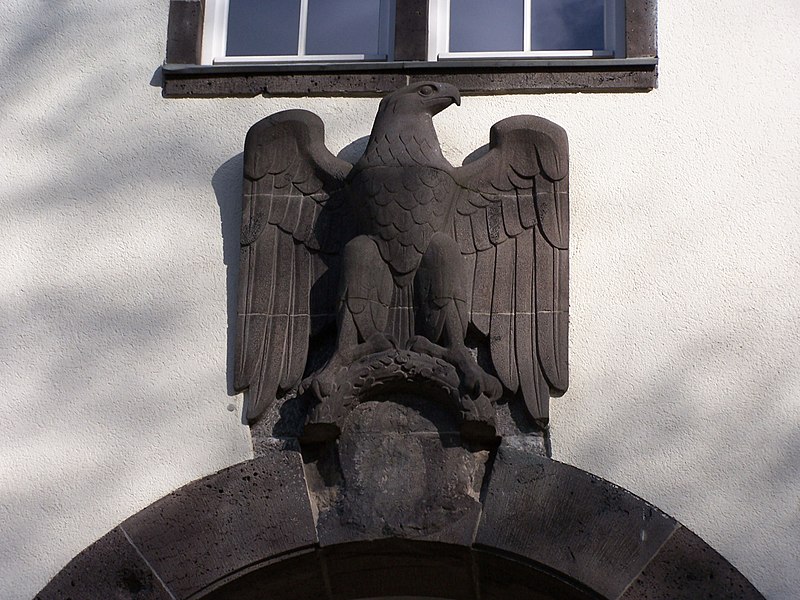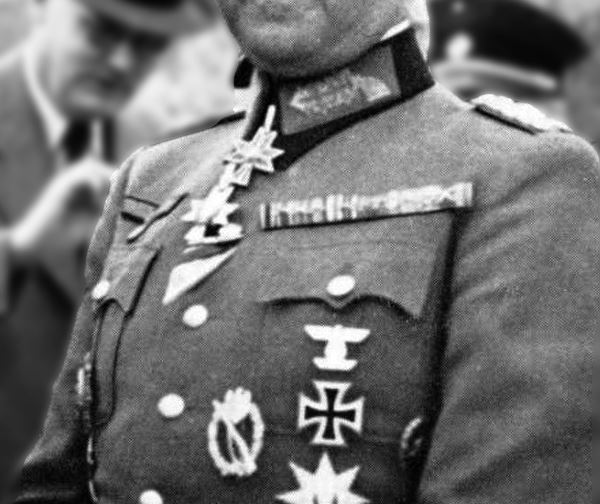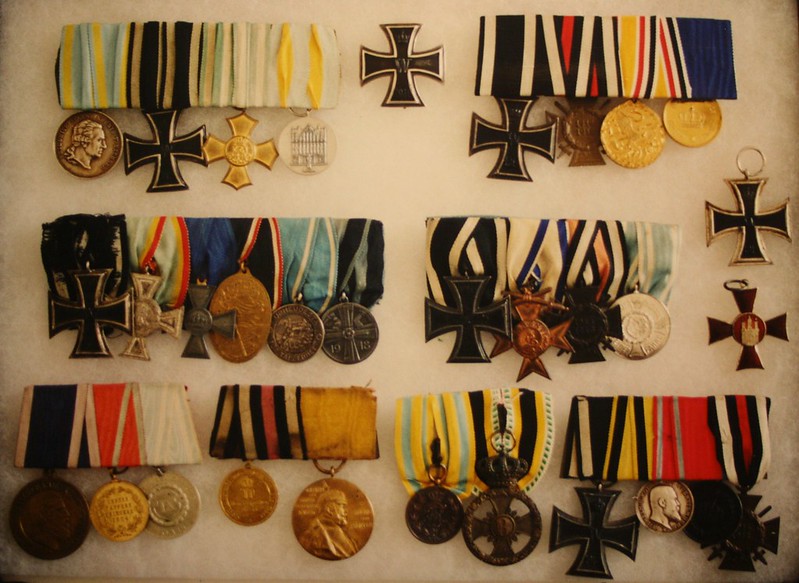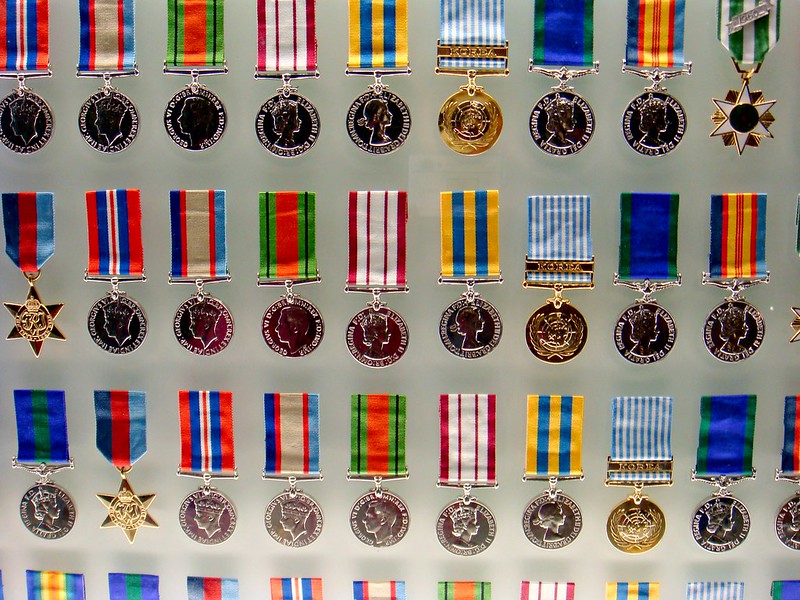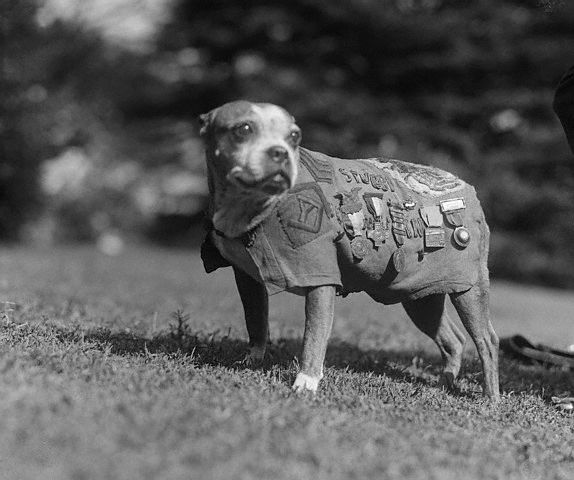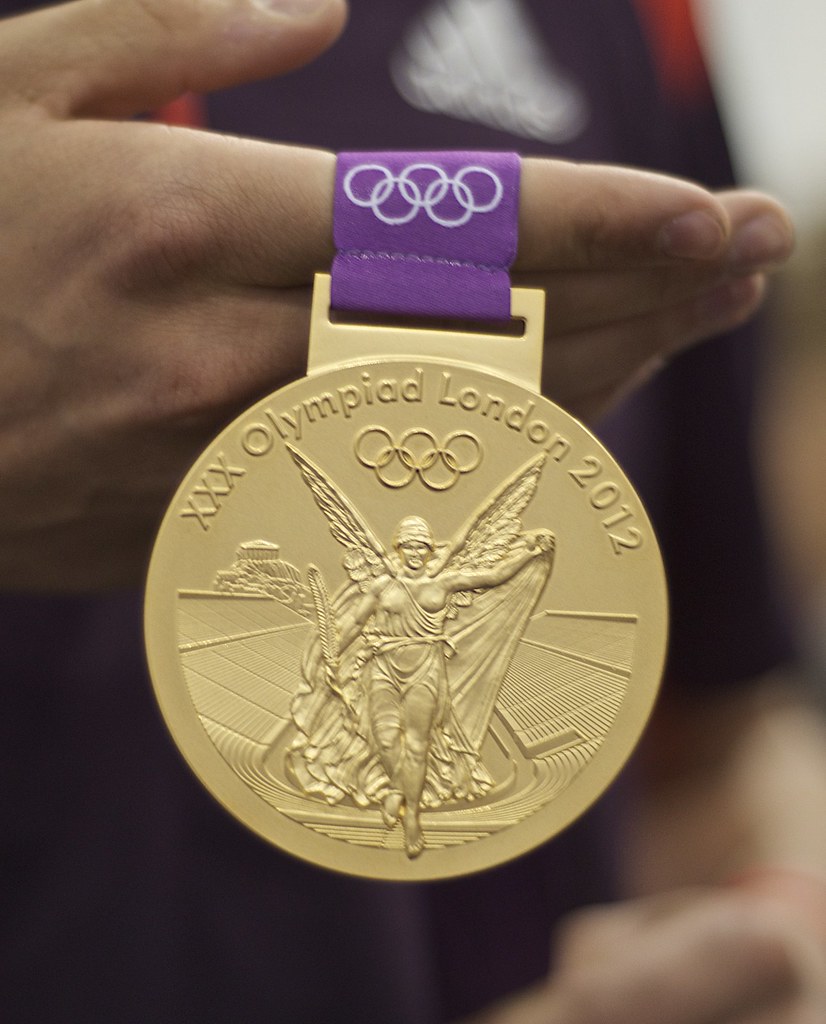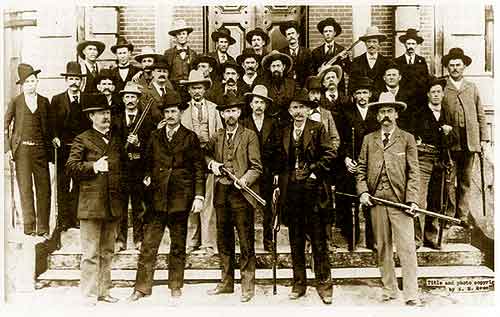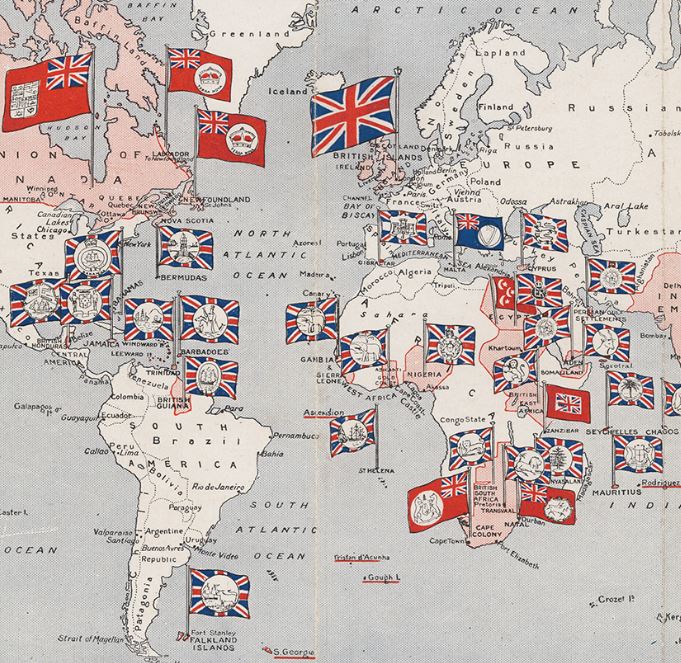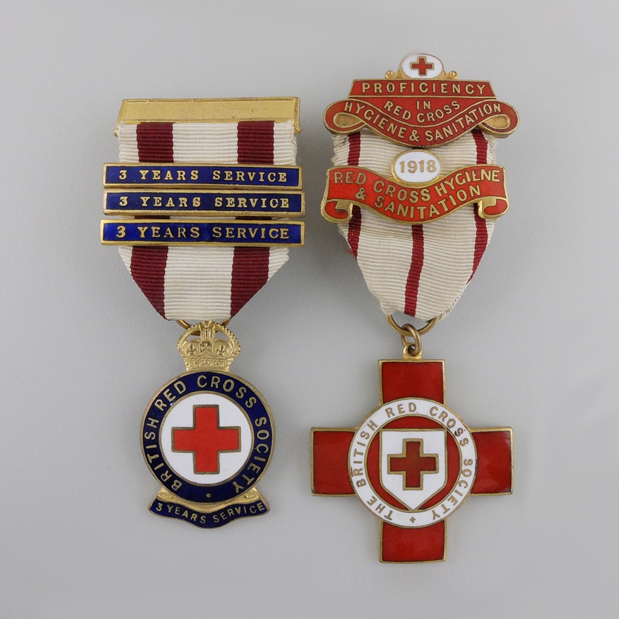German tinnies were small, lightweight badges or pins made of tin alloy, typically featuring patriotic or propaganda motifs, slogans, or symbols related to Nazi ideology and events of the time. They were popular during World War II as they served multiple purposes, including fundraising. Tinnies played a role in fostering a sense of unity, patriotism, and support for the regime among the German population during the conflict. So, let’s take a look at their history and some examples.
The Purpose of German Tinnies
German tinnies were extremely popular during World War II as they served multiple purposes. First of all, they were used as a tool for propaganda, promoting Nazi ideals, events, and personalities. They often featured imagery glorifying the military, Hitler, or achievements of the Third Reich, serving to rally support for the regime and boost morale among the civilian population.
Many people also collected tinnies as souvenirs or mementos of significant events or rallies they attended. They were affordable and accessible, making them appealing to a wide range of people, including soldiers, civilians, and members of Nazi organizations.
In some cases, tinnies were sold as part of fundraising efforts for various causes, such as supporting the war effort, charitable organizations, or Nazi Party activities. Proceeds from tinnie sales could contribute to financing Nazi initiatives or providing aid to soldiers and their families.
German Tinnies: Examples and Pictures
Overall, the process of making German tinnies was relatively efficient and cost-effective, allowing for the mass production of these small badges during World War II. Their widespread production and distribution mean that tinnies come in a variety of designs, making them interesting to collectors seeking diversity in their collections.
1932: The Wuppertal Hitler Tag Participants Badge
This commemorative badge was issued to individuals who participated in the Hitler Tag event held in Wuppertal, Germany, in 1932. This event was organized by the National Socialist German Workers’ Party (NSDAP), commonly known as the Nazi Party, and served as a platform for Adolf Hitler to rally support for his political agenda.
1932: The N.S Flugtag Neustadt Haardt Rhein-Pfalz
The 1932 N.S. Flugtag Neustadt Haardt Rhein-Pfalz was an aviation event organized by the National Socialist German Workers’ Party (NSDAP), also known as the Nazi Party, held in Neustadt an der Weinstraße in the Rhein-Pfalz region of Germany. Flugtag translates to “flight day” in English, and these events typically featured airshows, aircraft demonstrations, and displays of aviation prowess.
1033: The Fest der Jugend Badge
The 1933 Fest der Jugend badge was a badge issued for the Festival of Youth held in 1933. This event, organized by the Nazi Party, aimed to mobilize and indoctrinate German youth in support of the party’s ideology and agenda. The badge featured symbols associated with the Nazi regime, such as the swastika, and was often worn by participants and attendees of the festival.
1933: The Gau Thüringen Erfurt Badge
The 1933 Gau Thüringen Erfurt Badge was a commemorative badge associated with the Nazi Party’s regional administration in Thuringia, Germany. These badges were distributed to party members and supporters in the region, serving as a symbol of affiliation with the Nazi movement.
1933: The NSDAP National Party Badge
The 1933 NSDAP National Party Badge, also known as the Nazi Party Badge, was a prominent symbol of allegiance to the National Socialist German Workers’ Party (NSDAP) during the early years of Adolf Hitler’s regime in Germany. This badge, featuring a swastika encircled by an oak leaf wreath, was issued to party members as a mark of their affiliation and loyalty to the Nazi movement.
1935: The Wettkampftage der SA Gruppe Niedersachsen Badge
The 1935 Wettkampftage der SA Gruppe Niedersachsen Badge, translated as the “Competition Days of the SA Group Niedersachsen Badge,” was a commemorative badge issued by the Sturmabteilung (SA), or Storm Detachment, in the Lower Saxony region of Germany. The SA was a paramilitary organization.
1935: The Fest der Jugend Badge
The Fest der Jugend aimed to promote loyalty to the Nazi regime among young people. The 1935 Fest der Jugend Badge was a commemorative badge issued to mark the Fest der Jugend (Youth Festival) event held in Nazi Germany. This festival was organized by the National Socialist German Workers’ Party (NSDAP) as part of its efforts to mobilize and indoctrinate German youth into Nazi ideology.
1936: The NSDAP Gautag Hessen Nassau Badge
The 1936 NSDAP Gautag Hessen Nassau Badge was a commemorative badge issued by the National Socialist German Workers’ Party (NSDAP) for the Gautag event held in the Hessen Nassau region of Germany. Gautag events were large-scale gatherings organized by the NSDAP at the district (Gau) level where party members and supporters convened to celebrate Nazi ideology.
1936: The NSDAP Gautag Koblenz Trier Badge
The 1936 NSDAP Gautag Koblenz Trier Badge was a commemorative badge issued to mark the Gautag event held in Koblenz-Trier, Germany, in 1936. These events were organized by the National Socialist German Workers’ Party (NSDAP) as regional gatherings aimed at promoting party ideology, showcasing Nazi achievements, and fostering loyalty among party members.
1937: The Fest der Jugend Badge
The 1937 Fest der Jugend Badge was a commemorative badge issued for the Fest der Jugend event held in 1937. This event, translated as “Youth Festival,” was organized by the National Socialist German Workers’ Party (NSDAP) in Germany. The badge features the traditional eagle, swastika, and inscription referring to the event.
1938: The NSDAP Gautag Bochum Westfallen
The 1938 NSDAP Gautag Bochum Westfallen Badge was issued for the Gautag event held in Bochum, Westphalia in 1938. Gautag events were regional gatherings organized by the National Socialist German Workers’ Party (NSDAP) in various parts of Germany. These events typically featured speeches, parades, and other activities aimed at promoting Nazi ideology and bolstering party morale.
1938: The NSDAP Kreistag Mecklenburg Ludwigslust
The 1938 NSDAP Kreistag Mecklenburg Ludwigslust Badge was issued for the Kreistag event held in Ludwigslust, Mecklenburg in 1938. Kreistag events were district-level gatherings organized by the National Socialist German Workers’ Party (NSDAP) in various regions of Germany. These gatherings served as platforms for disseminating Nazi propaganda, promoting party policies, and fostering loyalty among party members.
How Were Nazi Tinnies Made?
German tinnies during WW2 were typically made using a process called die-striking or stamping. Artists fist conceptualized designs featuring patriotic or propaganda motifs, symbols, or slogans associated with the Nazi regime or specific events. Metal dies were then meticulously created, bearing negative impressions of these designs. Sheets of tin alloy, typically thin and composed of tin mixed with other metals like lead or zinc, were prepared for stamping.
Positioned between the dies of a stamping press, these metal sheets underwent significant force, imprinting the design onto the metal and cutting out the shape of the tinnie simultaneously. Following stamping, tinnies underwent various finishing steps, including cleaning, polishing, and sometimes adding enamel coating or paint.
Depending on the design, attachment mechanisms like pins or clips were affixed to the back, facilitating wearing or display.

